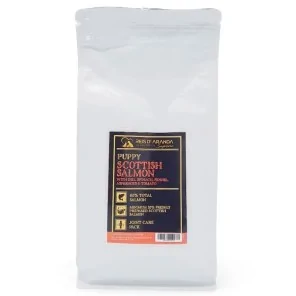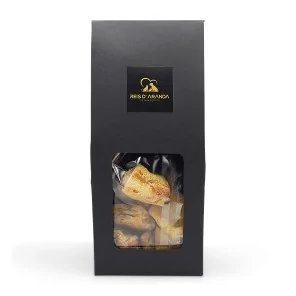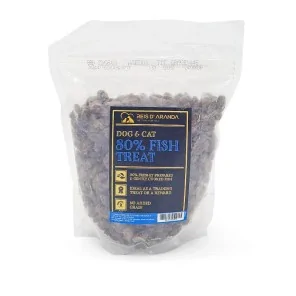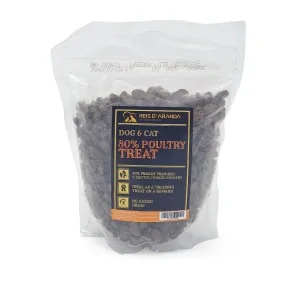Its name says it all: the Vienna blue rabbit comes from Austria. Not only is it beautiful with its shiny blue-grey...
THE BORDER COLLIE
INTRODUCTION
The border collie is a working breed of dog included in the Collie denomination. The breed originated on the border between Scotland and England as a sheepdog, primarily to work with flocks of sheep. The Border Collie was selected primarily to emphasise intelligence and obedience; because of this, they are one of the most popular sheepdogs today.
THE ORIGIN OF THE BORDER COLLIE
The border collie is a descendant of the native collie, a type of traditional domestic dog native to the British Isles. The name of the breed (‘border collie’ in English) indicates that the most likely place of origin of the border collie was the border between Scotland and England. The Border Collie is a shepherd dog that originated with the Celts who came to the British Isles between the 5th and 1st century BC. They settled in Ireland and brought with them their dogs, which they called ‘collie’ (‘useful’) in Gaelic for their herding ability.
The Celts later moved to the Scottish Highlands, where the Highlands Collie emerged, more suited to working in rocky and hilly areas. However, Irish and Scottish farmers kept trying to improve the breed until finally the Border Collie was born. The Border Collie is therefore a direct descendant of the traditional sheepdog of the Scottish Highlands and Northumberland in England, where systematic breeding began in the 19th century.
Most border collies are descended from a single dog called Old Hemp. Old Hemp was born in Northumberland in England in 1893 and died in 1901, and had a characteristic white-black-brown tricolour.10 His breeder, Adam Telfer, bred him by crossing Roy, a traditional black and brown sheepdog, with Meg, a greyhound. Old Hemp was a quiet, robust, sociable dog, who led sheep instinctively and very characteristically, stalking them in a circle. His ease with sheep became very famous, and many shepherds in the surrounding counties used him as a stud dog; Old Hemp's herding style thus became one of the main characteristics of the border collie, and Old Hemp became the ancestor of all border collie thoroughbreds.
The term border collie was introduced in 1915 by James Reid, secretary of the International Sheepdog Association of the United Kingdom. The term was introduced to distinguish border collies from the two collie breeds recognised by the Kennel Club at the time, known today as the long-haired collie and the short-haired collie. Although the latter were also originally herding dogs, they had been standardised as pets and companion dogs much earlier, and since at least 1860 had been the subject of systematic crossbreeding and breeding programmes. The border collie, although valued for its sociability, retained its character as a working dog.
In addition to Old Hemp, today's Border Collies are often related to two other foundational dogs. Winston Cap (born 1963) was one of the most popular sires in the history of the breed. Cap was a black and white dog typical of the breed, and his characteristic crouching pose while herding became one of the standards for Border Collies; many of today's dogs are descended from Winston.
Hindhope Jed (b. 1895) in Hindhope, Scotland, was a herding bitch who moved to New Zealand, where her intelligence and ability made her the matriarch of the breed in New Zealand and Australia.
THE BORDER COLLIE STANDARD
GENERAL APPEARANCE: Well proportioned; the silhouette is harmonious showing quality, grace and perfect balance, combined with sufficient substance to give the impression of endurance.
Any tendency to coarseness or weakness is undesirable.
IMPORTANT PROPORTIONS: The skull and muzzle are approximately equal in length. The body is slightly longer than the height at the withers.
HEAD
CRANIAL REGION:
SKULL: Fairly broad, occiput not pronounced.
STOP: Very well defined.
FACIAL REGION:
TRUFFLE: Black, except in brown (chocolate) specimens, in which the nose may be brown.
In blue specimens, the nose should be slate coloured. The nostrils should be well developed.
HOCOCO: Thinning towards the nose, moderately short and strong.
JAWS / TEETH: Strong teeth and jaws with perfect and regular scissor bite, i.e. the upper incisors closely overlapping the lower incisors and set square to the jaws.
CHEEKS: Neither full nor rounded.
EYES: Set wide apart, oval in shape and of moderate size. Their colour should be brown, except in ‘merle’ specimens, in which one or both, or part of one or both, may be blue. Gentle in expression, alert, alert and intelligent.
EARS: Of medium size and texture, set wide apart. They should be carried erect or semi-erect and alert to the slightest noise.
NECK: Of good length, strong and muscular, slightly arched and broadening towards the back.
BODY: Athletic in appearance. Slightly longer than height at withers.
LOIN: Deep and muscular but not tucked up.
CHEST: Deep and fairly broad, well sprung ribs.
TAIL: Moderately long, the last vertebra should reach at least to the tibio-tarsal joint; set on low, well furnished with hair, ending in an upward curve, which completes the graceful silhouette and balance of the dog. In a state of excitement, the tail may be raised but never carried over the back.
LIMBS
FOREQUARTERS: Seen from the front, the forelegs should be parallel to each other. Strong, but not heavy boned.
Shoulder blades: Sloping well back.
ELBOWS: Close to the body.
METACARPERS: Seen from the side, slightly sloping.
HANDS: Oval; pads thick, strong and sound; toes close together and arched; nails short and strong.
HINDQUARTERS: Broad and muscular, the upper profile sloping slightly towards the set on of the tail.
Upper thighs: Long, broad and muscular.
KNEES: Well angulated.
HIPS: Strong and close to the ground.
METATARS: From hock to ground, the hindquarters should be well boned and parallel to each other when viewed from behind.
FEET: Oval, pads thick, strong and sound; toes close together and arched; nails short and strong.
GAIT / MOVEMENT: Free, easy and indefatigable, lifting the feet as little as possible, giving the impression of caution and speed.
COAT :
HAIR: There are two varieties:
- Moderately long.
- Short.
In both, the outer coat is dense and of medium texture; the undercoat is soft and dense, giving good protection against the weather.
In dogs with a moderately long coat, the abundant hair forms mane, fringes and brush tail. On the face, ears, forelegs (except for fringes) and hindlegs from the hocks to the ground, the coat should be short and smooth.
COLOUR: A variety of colours is permissible. White should never prevail.
SIZE:
IDEAL HEIGHT:
- Males: 53 cm (21 inches)
- Bitches: slightly less.
FAULTS: Any departure from the foregoing points should be considered a fault and the seriousness with which the fault should be regarded should be in exact proportion to its degree and its effect upon the health and welfare of the dog and its ability to perform its traditional work.
DISQUALIFYING FAULTS:
- Aggressiveness or extreme shyness.
- Any dog showing clear signs of physical or behavioural abnormalities.
- Double Merle
- Deafness
- Microphthalmia
- Partial or total blindness
N.B.:
- Males should have two apparently normal appearing testicles fully descended into the scrotum.
- Only functionally and clinically healthy dogs, with breed typical conformation, should be used for breeding.
BORDER COLLIE HEALTH
The Border Collie is generally a healthy breed, but there are certain diseases that should be diagnosed by appropriate health testing prior to breeding.
On a general level, we must point out that the popularisation of this breed in recent years has brought with it an increase in certain hereditary diseases common in the Border Collie, especially mental illnesses such as phobias and hereditary aggression due to a lack of correct selection; this is especially seen in the working line Border Collies (very different physically from the beauty Border Collie, such as the one in the photo accompanying this blog). In terms of grooming, they should receive weekly brushings and baths every two months.
- HIP DYSPLASIA: Hip dysplasia is a defective development of the hip joint and femur and a degenerative process of the hip joint. This makes the hip unstable and causes swelling, weakness and pain. It has a strong genetic component, as well as a series of environmental, nutritional or behavioural factors in general that favour or prevent its appearance.
- NEURONAL ZEROIDE LIPOPHUSCINOSIS (CL): This disease causes the accumulation of auto-fluorescent lipopigments in brain cells leading to their degeneration and that of eye cells. Affected individuals show the first symptoms at one year of age, such as loss of motor skills, lack of vision, epilepsy.
CL is in the vast majority of cases a lethal disease, as there is no curative treatment. Genetic tests are now available to indicate whether a dog is normal, a carrier or affected, so that crosses can be optimised to avoid losing excellent genetics and at the same time not produce affected puppies in any case.
- COLLIE'S EYE ANOMALY (CEA): It is a congenital alteration of hereditary character that affects the posterior fibrous and vascular tunic of the eye. It is also known as Scleral Ectasia Syndrome. The pathogenesis is considered to be based on abnormal mesodermal differentiation that triggers defects of variable significance.
- TRAPPED NEUTROPHIL SYNDROME (TNS): It is a hereditary lethal disease, and the specimens that suffer it usually do not reach the age of one year. TNS causes a degeneration of the animal's immune system, depriving it of the necessary defences against diseases that healthy individuals would overcome without much difficulty.
TNS usually becomes apparent, with fatal consequences, at the time of the first vaccinations.
- MDR1: The MDR1 gene is a gene coding for P-glycoprotein.
A mutation in this gene results in the non-production of this protein, which is necessary for the transport of many drugs through the blood to various organs of the body.
It is responsible for preventing the transport of many drugs across the blood-brain barrier, i.e. it is responsible for limiting the penetration into the brain of a large number of drugs that would be toxic and even fatal if they reached the brain. Therefore, dogs with this mutated gene can allow the passage of certain drugs into the brain which in normal dogs have no harmful effect because they cannot reach the brain, but which in dogs with the mutated gene can reach the brain and cause very serious effects.
THE BORDER COLLIE'S PERSONALITY
The Border Collie is active, hard-working and more suited to life in the country. If confined without activity and companionship, this dog can become unhappy and destructive; it is very selective about the humans it accepts into its social circle, so it is often distrustful and shy of strangers; it has a quick bite. The breed is very intelligent, a quick learner and responds well to praise.
CONCLUSION
It is a dog that needs time and dedication, very active, to the point that it can be considered ‘hyperactive’, which is why there are many canine experts who advise this dog to stay in rural environments where it is easier for it to enjoy the open air without the permanent presence of its guardian, something always to be taken into account when taking a dog to an urban environment and/or to a small house.
Leave a comment
Log in to post comments
















